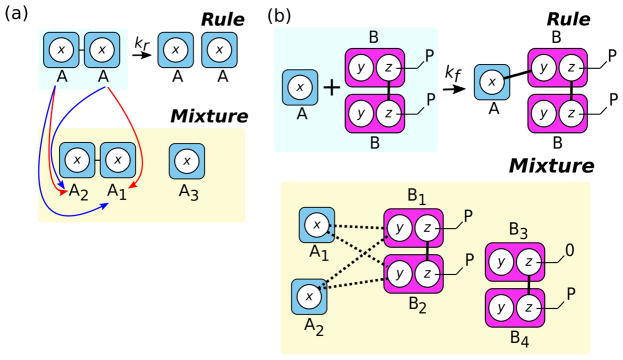Fig. 4.
Symmetry and reaction path degeneracy influence rule rate calcuation. a Symmetry in a pattern results in multiple matches (red and blue arrows) from the pattern to a particular set of molecules. Correctly computing the rate of a rule (given certain assumptions outlined in Section 6.2) requires that the rate is divided by the number of symmetries present in the rule’s patterns. b Rules where a pattern has multiple sites or pattern molecules that can be the target of the transformation defined by a rule have reaction path degeneracy. This can be seen in the simulation mixture illustrated at the bottom of the panel, where there are four possible binding events (denoted by the broken lines) implied by the rule illustrated at the top of the panel. Correctly calculating the rate for the rule requires multiplying the match-based rate by the number of possible reaction paths present among the rule’s patterns (2 y sites competent for binding site x on A) and also accommodating other symmetries effects if necessary (dividing by 2 due to the symmetric B–B dimer pattern).

